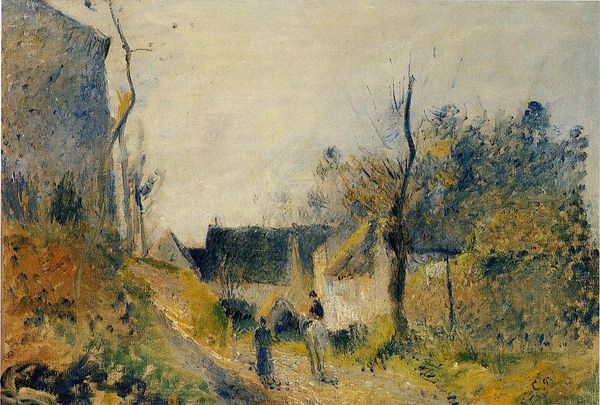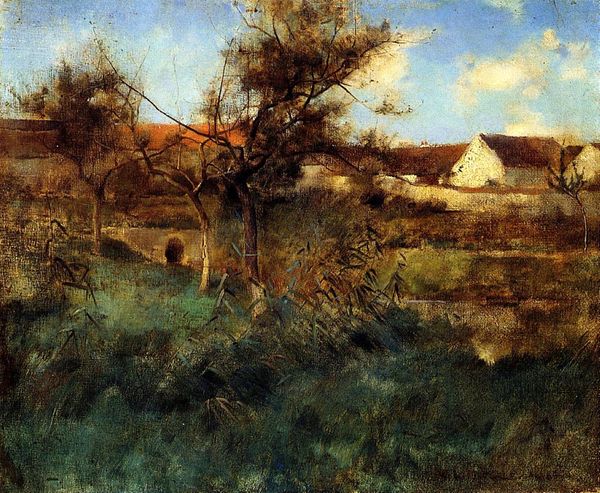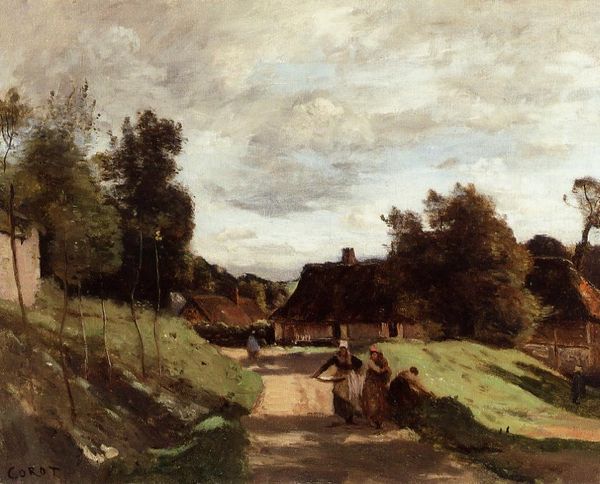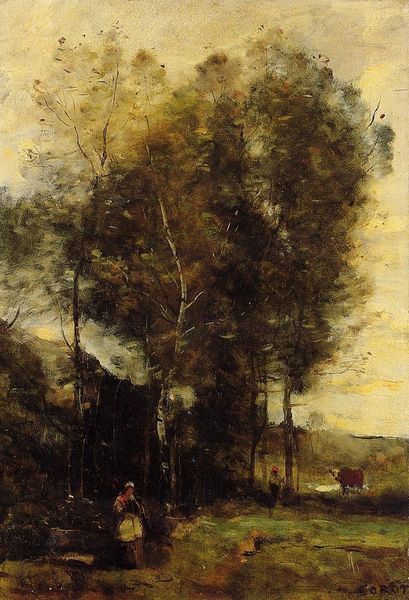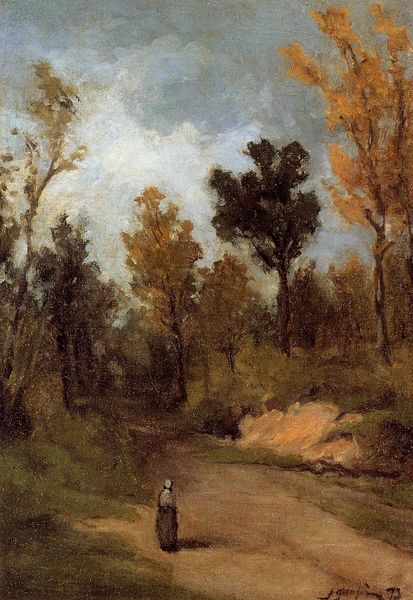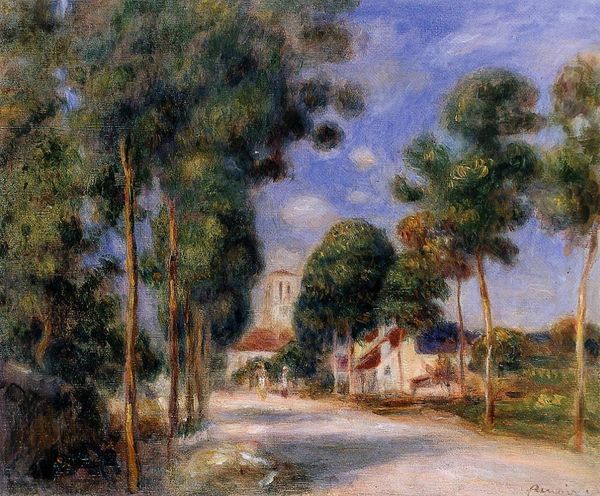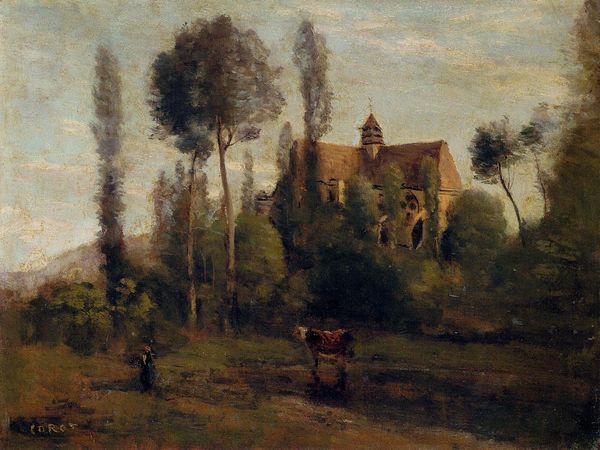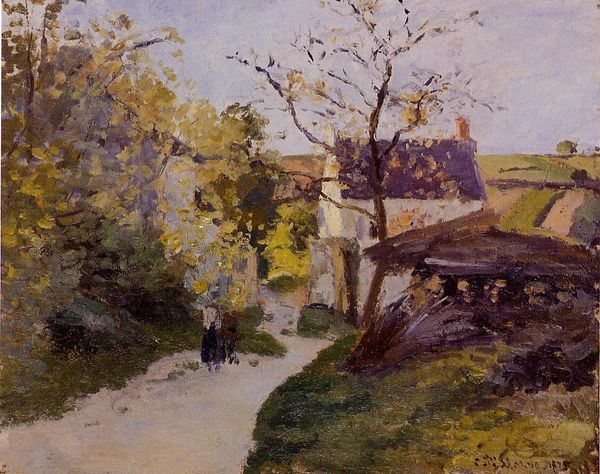
Dimensions: 83.1 x 104.1 cm
Copyright: Public domain
Curator: Jean-Baptiste-Camille Corot's work, titled "Path Towards a House in the Countryside," completed around 1864, presents us with a seemingly simple, rustic scene, a house barely visible amid trees, viewed along a dirt track. Editor: It's quite lovely, isn’t it? A soft, dreamy landscape. The composition is really compelling—the winding path invites your eye directly into the heart of the painting. I love how the light filters through the trees. Curator: I agree. But to understand this, we must recognize Corot’s complex position. While his landscapes romanticize the French countryside, it's important to consider the societal upheavals of 19th-century France and Corot’s bourgeois background. These aren't straightforward, apolitical idylls. Editor: I see your point, and it's valuable. Still, the piece’s genius lies in its formal elements: the balance of light and shadow, the layering of textures… look at how he uses those wispy brushstrokes to suggest movement in the trees. The whole painting oscillates. Curator: But doesn't the solitary figure on the path also speak to displacement? Consider the changing agricultural landscape pushing rural populations. What looks like a charming stroll might be a depiction of economic migration, with gendered implications. Editor: It's possible. But the enduring quality is Corot's skillful manipulation of pictorial space. Note the subdued palette—earthy greens and browns contrasted with those pockets of bright blue in the sky. It generates a certain mood through its careful arrangement of hues and tones. It's more than just pretty. Curator: Precisely, “pretty” is inadequate. It elides the deeper narratives of power and marginalization that paintings like these can reveal. Art, even pastoral art, is never truly separate from its sociopolitical moment. This canvas operates as an early version of plein air. Editor: True. Corot pushes us to reconsider how we perceive even the simplest things. It’s as though his primary concern, however understated, lay in reassembling fundamental artistic elements in radical configurations. Curator: In many ways, art offers us opportunities to understand culture critically; to trace its complex, often contradictory histories. Editor: And Corot uses landscape to make formal propositions that allow him to find an elusive poetic quality. I appreciate gaining perspective, as usual.
Comments
No comments
Be the first to comment and join the conversation on the ultimate creative platform.
